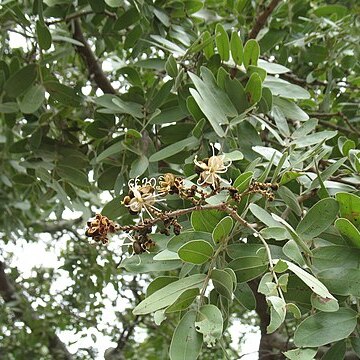Leaves paripinnate; leaflets 2–many, opposite, asymmetric at base; translucent dots present or not; petiolules usually twisted with secondary nerves from the base on the proximal side of the main nerve, the venation prominent on both surfaces; stipules intrapetiolar, connate below, bilobed, persistent or caducous.
Pods flattened, woody, elastically dehiscent into two valves; upper suture usually with a lateral flange-like ridge or wing, 1–5-seeded.
Inflorescence a terminal panicle; bracteoles 2, valvate, enclosing the flower buds, persistent, keeled on the back.
Ovary very shortly stipitate, up to 5-ovulate; style elongate; stigma capitate.
Stamens 10, all fertile; nine filaments shortly connate, the tenth free.
Seeds flattened, without areoles, on short funicles.
Petals 5, one large and four small (in our area).
Sepals 5, well developed, ± equal.
Trees, often evergreen, unarmed.
Hypanthium absent.
